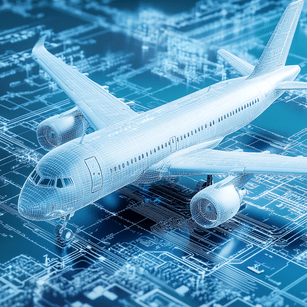MEMS Sensors vs. Traditional Sensors in Aerospace Applications
| Feature | MEMS Sensors | Traditional Sensors |
|---|---|---|
| Size and Weight | Extremely small and lightweight, reducing the overall weight and size of aerospace systems. | Larger and heavier, contributing more to the system’s weight. |
| Power Consumption | Low power consumption, ideal for energy-efficient applications. | Generally consume more power, impacting the overall energy efficiency of the system. |
| Sensitivity and Precision | High sensitivity and precision, capable of detecting minute changes in conditions. | Less sensitive compared to MEMS; precision varies depending on the sensor type and technology. |
| Cost | Lower production costs due to batch fabrication processes. | Higher costs associated with manufacturing, especially for high precision sensors. |
| Integration and Scalability | Easily integrated into various systems due to their small size; highly scalable for large-scale applications. | Integration can be complex due to larger size; scalability is often more challenging and costly. |
| Response Time | Faster response times due to smaller dimensions and direct measurement capabilities. | Slower response times due to larger physical dimensions and the mechanics of operation. |
| Durability | Highly durable with less susceptibility to mechanical wear because of their small size and lack of moving parts. | Variable durability; traditional sensors with moving parts are more prone to wear and mechanical failure. |
| Temperature Range | Capable of operating over a wide temperature range, suitable for extreme aerospace environments. | Temperature range is often limited; may require additional components to handle extreme conditions. |
| Maintenance | Require less maintenance due to fewer mechanical failures. | Higher maintenance needs, especially in complex systems with multiple moving parts. |
| Technological Adaptability | Rapid technological adaptability due to continuous innovations in MEMS technology. | Slower adaptation to new technologies as updates in traditional sensor designs are less frequent. |
| Fabrication Technology | Utilizes advanced semiconductor and microfabrication technologies allowing for mass production at lower costs. | Utilizes conventional fabrication techniques; often more expensive and less adaptable to miniaturization. |
| Application Versatility | Versatile applications in aerospace due to compact size and ability to integrate into various systems and components. | Limited versatility due to size and integration challenges, often designated for specific tasks. |
| Reliability in Harsh Conditions | Exceptional reliability in harsh environmental conditions due to robust design and minimal moving parts. | Reliability varies; traditional sensors may require additional housing or protection in harsh conditions. |
| Signal Noise and Interference | Lower signal noise and reduced interference susceptibility due to advanced MEMS design and material use. | Higher signal noise and greater susceptibility to interference depending on the design and materials used. |
| Innovative Potential | High potential for innovative applications incorporating nanotechnology and new material sciences. | Less potential for innovation within the sensor itself, though innovations may improve functionality. |
| Data Accuracy | Provides higher data accuracy through precise measurements and minimal drift. | Data accuracy is dependable, but may be affected by environmental factors and sensor aging. |
| Market Growth | Rapid market growth as aerospace industries seek smaller, more efficient technology solutions. | Steady market, with growth dependent on new material and technology developments in traditional sensors. |
| Environmental Impact | Smaller environmental impact due to reduced material use and waste during production and operation. | Greater environmental impact due to more substantial material use and waste. |
MEMS sensors offer significant advantages in aerospace applications, including their small size, high precision, low power consumption, and adaptability to new technologies. They are particularly suited for modern aerospace systems where efficiency, accuracy, and integration are critical. Traditional sensors, while reliable and robust, are generally larger and less adaptable to the rapidly evolving demands of aerospace technology.

